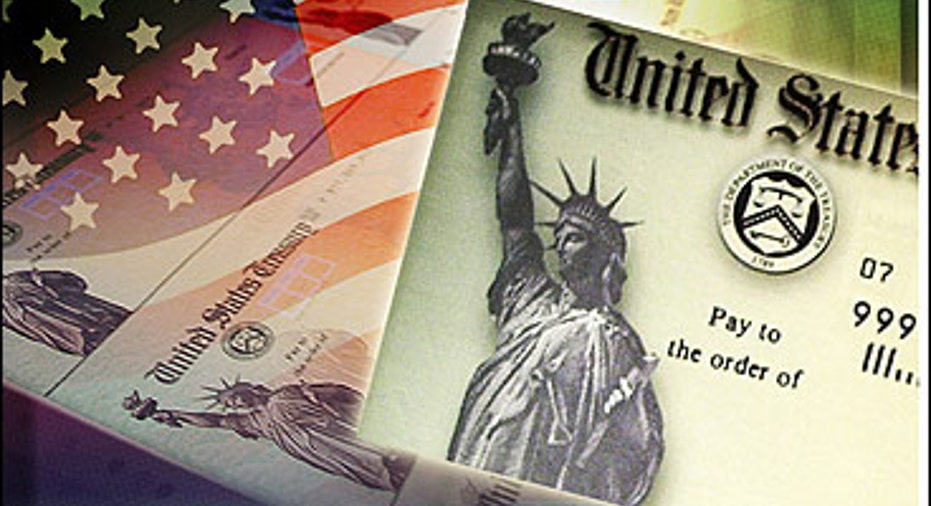The U.S. Bond Market Just Got Alot More Popular, ETF Tips to Win

Treasury bond exchange traded funds have outperformed this year, with Treasuries enjoying their best start to a year in over a decade, and the momentum could be sustained as lingering concerns over the "Brexit" vote pushes investors toward safe-haven assets and the Federal Reserve will likely delay interest rate normalization in light of the uncertainty.
U.S. government bonds have rallied this year after heightened volatility and global economic weakness pressured the equities market, renewing the safety play at the start of the year.
Now, with the United Kingdom set to sever ties with the European Union, the safe-haven theme may be extended. In a knee-jerk reaction to the global sell-off following the Brexit tally, investors piled into the safety of U.S. Treasuries to preserve capital, pushing yields toward record lows - yields on benchmark 10-year Treasury notes plunged to 1.419% early Friday, just shy of its record low of 1404% in July 2012.
Along with the uncertainty over the Brexit fallout, the U.S. Treasury market may find further support from the Fed as we will likely extend the low-rate environment. U.S.-interest rate futures traders even began to price in a less than 5% probability that the Fed could lower interest rates when it next meets on July 26, 27. Many don't expect the central bank to hike interest rates until 2017 as the Brexit vote could weigh on U.S. and global growth.
Moreover, global central banks could expand their loose monetary policies and shore up liquidity in markets to support their respective economies in the wake of the Brexit fallout, which would keep pressure on overseas yields and potentially send foreign investors into relatively more attractive yield-generating assets like U.S. Treasury bonds. Both the Bank of England and the European Central Bank promised to take action to assuage the markets.
“To support the functioning of markets, the Bank of England stands ready to provide more than £250bn of additional funds through its normal facilities. The Bank of England is also able to provide substantial liquidity in foreign currency, if required.” Mark Carney, Governor of the Bank of England, said in a statement.
“The ECB stands ready to provide additional liquidity, if needed, in euro and foreign currencies," according to an ECB statement.
Consequently, investors may turn to extended duration Treasury bond ETFs as a source of potential returns and yield generation. Among the best performing Treasury bond ETFs so far this year, the iShares 20+ Year Treasury Bond ETF (NYSE:TLT) gained 10.8%, PIMCO 25+ Year Zero Coupon US Treasury (NYSE:ZROZ) increased 16.0% and Vanguard Extended Duration Treasury ETF (NYSE:EDV) advanced 15.6%.
TLT has a 17.82 year duration, 2.33% 30-day SEC yield and a 0.15% expense ratio. ZROZ has a 27.22 year duration, a 2.47% 30-day SEC yield and a 0.16% expense ratio. EDV comes with a 25.8 year duration, 2.54% 30-day SEC yield and a 0.10% expense ratio.
Moreover, fixed-income investors may consider Treasury inflation protected securities, or TIPS, as a way to hedge against rising inflationary pressures. For TIPS exposure, investors can look at options like the iShares TIPS Bond ETF (NYSE:TIP), Schwab U.S. TIPS (NYSE:SCHP) and SPDR Barclays TIPS ETF (NYSE:IPE).
While inflation expectations may remain muted now, investors are already looking into TIPS as a hedge against rising prices ahead. TIPS returns are affected by interest-rate risk as well as changes in the principal value when the Consumer Price Index moves. The securities will adjust their principal value upward in response to a higher CPI. Investors will typically look at TIPS ahead of an inflationary period since buying TIPS after inflation has gone up means that the security has already priced in the inflation and investors would likely be overpaying for the TIPS exposure.
This article was provided by our partners at etftrends.com.



















